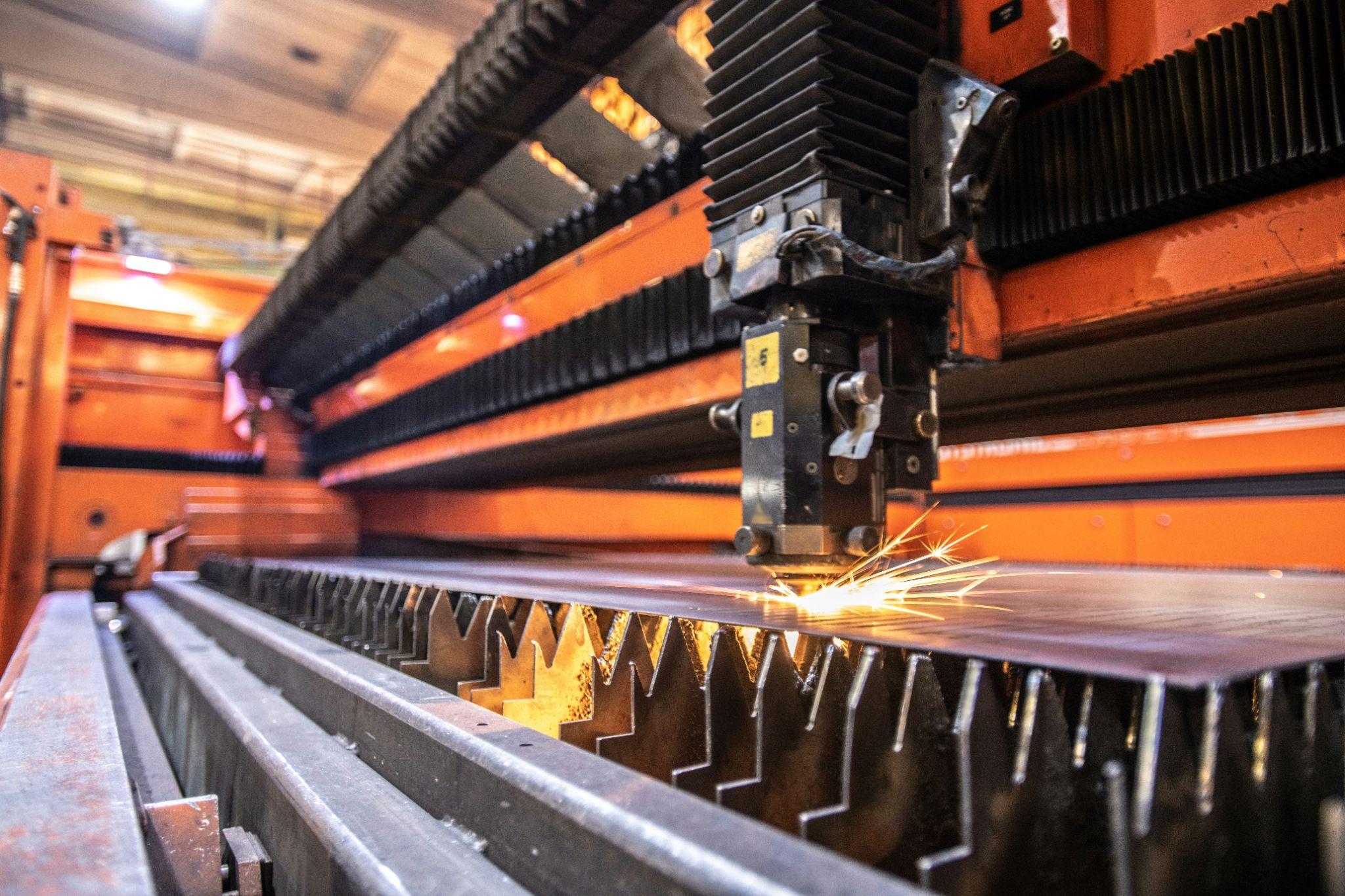Transforming Metal Fabrication with the Latest Industry Innovations
Metal fabrication is an essential industry that shapes the backbone of modern infrastructure, automotive, aerospace, and various other sectors. As industries evolve and demands increase, innovation in metal fabrication becomes crucial. By adopting cutting-edge technologies and new methodologies, companies can improve efficiency, reduce costs, and enhance product quality. This article delves into the latest innovations transforming metal fabrication, showcasing the strides being made and their impacts across various industries.
Advanced Manufacturing Techniques
In recent years, advanced manufacturing techniques have revolutionized metal fabrication, offering unprecedented precision and efficiency.
Additive Manufacturing (3D Printing)
Additive manufacturing, commonly known as 3D printing, has made significant inroads in metal fabrication. Unlike traditional subtractive methods, which involve cutting away material, additive manufacturing builds components layer by layer from metal powders. This technique allows for complex geometries that are difficult or impossible to achieve with conventional methods. Additionally, it reduces material waste and shortens the production cycle, making it a cost-effective solution for prototyping and small-batch production.
Laser Cutting Technology
Laser cutting has become a cornerstone of modern metal fabrication. Utilizing a high-powered laser beam, this technology can cut through various metals with incredible precision and speed. The advantages of using laser cutting technology include minimal material waste, high-quality finishes, and the ability to cut intricate shapes and designs. As lasers become more advanced, their applications in metal fabrication continue to expand, enabling manufacturers to produce detailed and complex components efficiently.

Photo: via Unsplash
Waterjet Cutting
Waterjet cutting uses a high-pressure stream of water, often mixed with abrasive particles, to cut through metal. This method is particularly beneficial for materials that are sensitive to high temperatures, as it does not produce heat-affected zones. Waterjet cutting is versatile, capable of cutting thick metals and producing intricate designs without altering the material’s properties. It’s a valuable tool for industries requiring precision and quality without thermal distortion.
Smart Manufacturing and Automation
The integration of smart manufacturing and automation technologies is transforming metal fabrication into a highly efficient, data-driven industry.
Integration of IoT in Metal Fabrication
The Internet of Things (IoT) is revolutionizing metal fabrication by connecting machines, tools, and systems to the internet, enabling real-time monitoring and control. IoT devices collect data on machine performance, energy consumption, and production processes, providing valuable insights for optimization. This connectivity enhances predictive maintenance, reduces downtime, and improves overall efficiency.
Robotics and Automated Systems
Robotics and automation are at the forefront of the metal fabrication revolution. Robotic arms and automated systems perform tasks such as welding, cutting, and assembly with high precision and consistency. Automation reduces human error, increases production speed, and enhances workplace safety by handling dangerous tasks. The use of robotics in metal fabrication not only boosts productivity but also ensures high-quality outputs.
AI and Machine Learning Applications
Artificial intelligence (AI) and machine learning are being integrated into metal fabrication processes to enhance decision-making and optimize operations. AI algorithms analyze data from production lines to identify patterns, predict equipment failures, and suggest improvements. Machine learning models can also optimize production schedules, ensuring efficient use of resources and minimizing downtime. These technologies enable a smarter, more responsive manufacturing environment.
New Materials and Composites
The development of new materials and composites is driving innovation in metal fabrication, enabling the creation of stronger, lighter, and more durable products.
Development of Advanced Alloys
Advanced alloys are engineered to meet specific performance criteria, offering superior strength, corrosion resistance, and durability. Innovations in metallurgy have led to the creation of alloys that withstand extreme conditions, making them ideal for aerospace, automotive, and industrial applications. These advanced materials enhance the performance and lifespan of fabricated components.
Use of Lightweight Materials
Lightweight materials, such as aluminum and titanium alloys, are becoming increasingly popular in metal fabrication. These materials offer high strength-to-weight ratios, making them suitable for applications where reducing weight is critical, such as in the automotive and aerospace industries. By incorporating lightweight materials, manufacturers can improve fuel efficiency, reduce emissions, and enhance overall performance.
High-Strength Composites
High-strength composites combine metals with other materials, such as ceramics or polymers, to create products with enhanced properties. These composites offer a balance of strength, durability, and lightweight characteristics, making them ideal for demanding applications. Innovations in composite materials are opening new possibilities in metal fabrication, enabling the production of components that meet stringent performance requirements.
Sustainability in Metal Fabrication
As environmental concerns grow, the metal fabrication industry is adopting sustainable practices to reduce its environmental footprint.
Eco-Friendly Manufacturing Processes
Eco-friendly manufacturing processes minimize the environmental impact of metal fabrication. Techniques such as additive manufacturing produce less waste compared to traditional methods. Additionally, the use of non-toxic materials and energy-efficient technologies contribute to greener production practices. Sustainable manufacturing not only benefits the environment but also aligns with growing consumer demand for eco-conscious products.
Energy-Efficient Technologies
Energy-efficient technologies are integral to reducing the carbon footprint of metal fabrication. Innovations such as LED lighting, high-efficiency motors, and advanced heating systems help lower energy consumption. Implementing energy management systems allows manufacturers to monitor and optimize energy use, leading to cost savings and environmental benefits.
Recycling and Waste Reduction
Recycling and waste reduction are essential components of sustainable metal fabrication. By recycling scrap metal and repurposing waste materials, manufacturers can reduce their reliance on raw resources and minimize landfill contributions. Efficient waste management practices not only conserve resources but also reduce operational costs.
Key Industries Leveraging Innovations
Several industries are at the forefront of adopting innovative metal fabrication techniques, reaping significant benefits.
Aerospace and Aviation
The aerospace and aviation industries rely heavily on advanced metal fabrication techniques to produce high-performance components. Innovations such as additive manufacturing and advanced alloys are used to create lightweight, durable parts that meet stringent safety and performance standards. These innovations enhance fuel efficiency, reduce emissions, and improve the overall performance of aircraft.
Automotive Industry
In the automotive industry, metal fabrication innovations are driving the production of lighter, stronger, and more efficient vehicles. Techniques such as laser cutting and the use of lightweight materials contribute to weight reduction, improving fuel efficiency and reducing emissions. Advanced manufacturing processes also enable the production of complex components, enhancing vehicle design and performance.
Construction and Infrastructure
The construction and infrastructure sectors benefit from innovative metal fabrication techniques through the creation of durable, high-strength components. Advanced manufacturing processes allow for the production of complex structural elements, improving the efficiency and safety of construction projects. Innovations in metal fabrication contribute to the development of sustainable, resilient infrastructure.
Challenges and Future Trends
Despite the significant advancements in metal fabrication, the industry faces challenges that need to be addressed to fully realize the potential of these innovations.
Overcoming Technological Barriers
Technological barriers, such as the high cost of advanced equipment and the complexity of integrating new systems, pose challenges to the widespread adoption of innovative techniques. Continued research and development are essential to make these technologies more accessible and cost-effective.
Skills Gap and Workforce Training
The adoption of advanced technologies requires a skilled workforce capable of operating and maintaining sophisticated equipment. Addressing the skills gap through comprehensive training programs and education initiatives is crucial for the successful implementation of innovations in metal fabrication.
Predictions for the Future of Metal Fabrication
The future of metal fabrication looks promising, with continued advancements in technology driving the industry forward. The integration of AI, IoT, and advanced materials will further enhance efficiency, reduce costs, and improve product quality. Sustainable practices will become increasingly important, aligning with global efforts to reduce environmental impact.
Conclusion
Innovation is transforming metal fabrication, offering new opportunities for efficiency, cost savings, and improved product quality. By embracing advanced manufacturing techniques, smart technologies, new materials, and sustainable practices, the metal fabrication industry is poised for a bright future. Staying ahead of these innovations is essential for companies to remain competitive and meet the evolving demands of various industries.
































